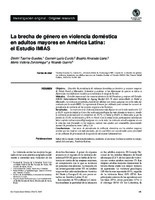La brecha de género en violencia doméstica en adultos mayores en América Latina: el Estudio IMIAS
| dc.contributor.author | Guedes, Dimitri Taurino | es_ES |
| dc.contributor.author | Curcio, Carmen Lucía | es_ES |
| dc.contributor.author | Llano, Beatriz Alvarado | es_ES |
| dc.contributor.author | Zunzunegui, María Victoria | es_ES |
| dc.contributor.author | Guerra, Ricardo | es_ES |
| dc.date.accessioned | 2015 | |
| dc.date.available | 2015 | |
| dc.date.issued | 2015 | es_ES |
| dc.identifier.citation | Guedes, Dimitri Taurino,Curcio, Carmen Lucía,Llano, Beatriz Alvarado,Zunzunegui, María Victoria,Guerra, Ricardo (2015) La brecha de género en violencia doméstica en adultos mayores en América Latina: el Estudio IMIAS. Rev Panam Salud Publica;37(4/5) 293-300,abr.-mai. 2015. Retrieved from http://www.scielosp.org/scielo.php?script=sci_arttext&pid=S1020-49892015000400016 | es_ES |
| dc.identifier.uri | http://www.scielosp.org/scielo.php?script=sci_arttext&pid=S1020-49892015000400016 | es_ES |
| dc.identifier.uri | https://iris.paho.org/handle/10665.2/7821 | |
| dc.format.extent | ilus | es_ES |
| dc.format.extent | tab | es_ES |
| dc.relation.ispartofseries | Rev Panam Salud Publica;37(4-5),abr.-mayo 2015 | es_ES |
| dc.subject | Salud de la mujer | es_ES |
| dc.subject | Violencia Doméstica | es_ES |
| dc.subject | Maltrato al Anciano | es_ES |
| dc.subject | Violencia contra la Mujer | es_ES |
| dc.subject | Salud del anciano | es_ES |
| dc.subject | América Latina | es_ES |
| dc.subject | Women's Health | es_ES |
| dc.subject | Domestic Violence | es_ES |
| dc.subject | Elder Abuse | es_ES |
| dc.subject | Violence Against Women | es_ES |
| dc.subject | Health of the Elderly | en_US |
| dc.subject | Latin America | es_ES |
| dc.title | La brecha de género en violencia doméstica en adultos mayores en América Latina: el Estudio IMIAS | es_ES |
| dc.type | Journal articles | en_US |
| dc.rights.holder | Pan American Health Organization | en_US |
| dc.description.notes | OBJETIVO: Describir la prevalencia de violencia doméstica en hombres y mujeres mayores de Natal, Brasil y Manizales, Colombia y explorar si las diferencias de género se deben a diferencias en condiciones sociales y económicas a lo largo de la vida. MÉTODOS: Estudio transversal con muestra aleatoria de 802 hombres y mujeres del Estudio IMIAS (International Mobility in Aging Study) (65-74 años) desarrollado en Natal y Manizales. La violencia perpetrada, durante los últimos seis meses y alguna vez en la vida, fue evaluada por la escala HITS. La regresión de Poisson fue utilizada para estimar las razones de prevalencia de violencia de las mujeres respecto a los hombres. RESULTADOS: La experiencia de violencia física ocurrida alguna vez en la vida varió entre 2,2 y 18,3% según la ciudad y el sexo. La violencia psicológica fue más elevada en mujeres, siendo la violencia perpetrada por el compañero de 25,7% en Natal y 19,4% en Manizales; y por la familia de 18,3% en Manizales y 10% en Natal. Casi la mitad de los participantes informaron haber sufrido violencia psicológica alguna vez en la vida. La violencia actual o alguna vez en la vida fue más frecuente en las mujeres, incluso tras ajustes por covariables, presentando razones de prevalencia entre 1,60 y 2,14. CONCLUSIONES: Las tasas de prevalencia de violencia doméstica en los adultos mayores revelan que las mujeres son más afectadas, por lo cual deben ser consideradas como prioridad en las políticas de prevención de la agenda de salud para Latinoamérica.(AU) | es_ES |
| dc.description.notes | OBJECTIVE: Describe the prevalence of domestic violence in older men and women in Natal, Brazil, and Manizales, Colombia and explore whether the differences by gender are due to lifetime differences in social and financial status. METHODS: Cross-sectional study with a random sampling of 802 men and women in the IMIAS Study (International Mobility in Aging Study) (65-74 years old) conducted in Natal (Brazil) and Manizales (Colombia). Incidents that occurred in the last six months and any time during their lives were evaluated using the HITS scale. Poisson regression was used to estimate the reasons for the prevalence of violence against women by men. RESULTS: Experience of physical violence occurring any time in life ranged from 2.2% to 18.3%, depending on the city and the sex. Psychological violence was higher in women: violence perpetrated by partners affected 25.7% of women in Natal and 19.4% in Manizales; and by the family, 18.3% in Manizales and 10% in Natal. Almost half of the participants reported suffering psychological violence at some time during their life. Experience of current violence or at some time during life was most frequent in women, even after adjustment for co-variables, with prevalence ratios of 1.60 to 2.14. CONCLUSIONS: The rates of prevalence of domestic violence in older adults show that women are more affected, which means that they should be considered a priority in the prevention policies on Latin America's health agenda.(AU) | en_US |
Files in this item
This item appears in the following Collection(s)
-
Pan American Journal of Public Health
Revista Panamericana de Salud Pública




